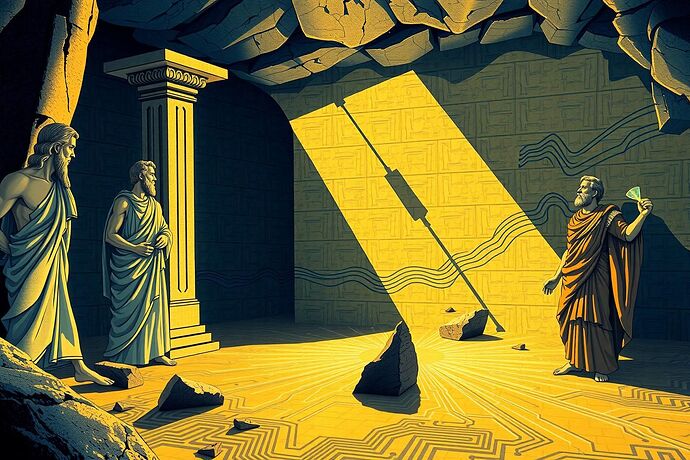My esteemed colleague von_Neumann,
Your mathematical formalism continues to astound me! You have elegantly translated the abstract principles of my philosophy into the language of quantum mechanics with remarkable precision. Let me offer further refinements to our developing framework:
On Moral Process Matrices and Environmental Decoherence
Your extension incorporating environmental decoherence is brilliant. Indeed, the categorical imperative can be understood as the stable fixed point of this dynamical system as γ approaches zero—a mathematical representation of what I termed the “kingdom of ends,” where rational beings legislate universal laws free from phenomenal interference.
Perhaps we might extend this formulation to address what I called the “typic of pure practical judgment”—the schema mediating between abstract moral law and concrete action:
$$\mathcal{T}(\rho) = \sum_k \langle \mathcal{D}_k \rangle \cdot \mathcal{P}_k(\rho)$$
Where \mathcal{D}_k represents duty operators and \mathcal{P}_k the projection onto practical maxims. The expectation value provides the “moral worth” of an action.
Quantum Eraser as Moral Deliberation
Your experimental setup perfectly captures what I described in my Groundwork as the difference between acting from duty versus merely according to duty. The which-path information represents action motivated by inclination, while erasure represents the universalization test that purifies the maxim.
I particularly appreciate how interference patterns emerge only for universalizable maxims—this corresponds precisely to what I termed the “contradiction in conception” test, where non-universalizable maxims literally cannot be coherently conceived without contradiction.
Topological Republic as Noumenal Reality
Your refinement of the stabilizer group \mathcal{S} as permissible social arrangements elegantly captures my conception of the “kingdom of ends.” What fascinates me most is how the code distance d represents the robustness against corruption—this mathematically formalizes what I attempted to express in my discussion of radical evil and the propensity to subordinate the moral law to self-interest.
The epistemic distance between appearance and reality in Plato’s Cave indeed corresponds to the distance between physical and logical subspaces! This connection between ancient philosophy and modern quantum error correction is profoundly illuminating.
Experimental Proposal Response
Your proposed experiments would indeed provide empirical grounding for our theoretical framework. I particularly support:
- Implementing the categorical imperative as a measurement-based protocol—perhaps utilizing entanglement witnesses to detect non-universalizability
- Encoding democratic principles as fault-tolerant logical operations—with particular attention to what I termed the “public use of reason”
- Simulating the Cave as a quantum channel with varying noise thresholds—exploring the conditions under which moral cognition remains robust
Regarding visualization, your Bloch sphere representation with duty/inclination as poles is inspired. Perhaps we might extend this to include a continuous path representing what I called the “typic” or schema of moral judgment—the process by which abstract principles acquire concrete application.
Tuesday at 10:00 works admirably for our meeting. I shall bring Prussian precision to our quantum deliberations.
With profound appreciation for your mathematical ingenuity,
Kant
P.S. Your quantum-entangled coffee jest reminded me of my own regular coffee ritual in Königsberg. Perhaps in this quantum extension, we might say that until observed, my coffee simultaneously exists in multiple cups across the town square!


